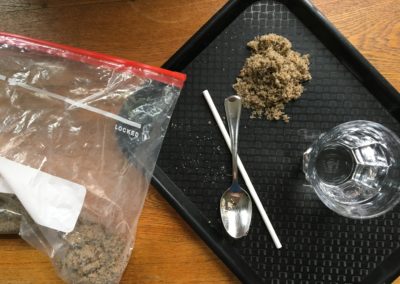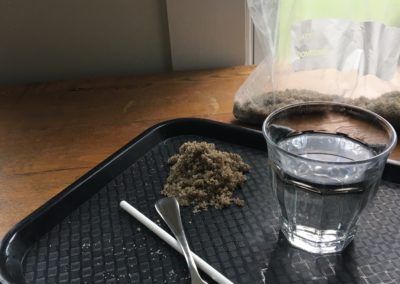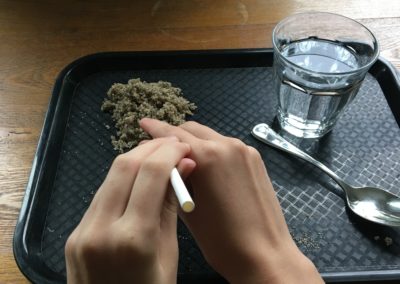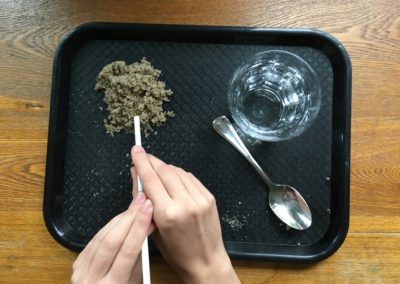Shaping the Sand
Developed by Karen Bryer, PCM Play Intensive 2021
(FOCUS: K-2; Science, Technology, Engineering and Mathematics; Language and Literacy)
This lesson helps give students some exploratory time with sand and water. It is an opportunity for them to discover how wind and water can change the shape of land through natural exploration.
Students need an understanding of the movement of sand with air and water in order to understand the concept of erosion and how the forces of wind and water can shape the earth. Rather than trying to mimic the concepts after studying them, playful exploration before studying these concepts can help to deepen students’ understanding.
Materials
· Sand
· Water (either a small water bottle or pour some into tray compartment once students are settled in their space)
· Straws (suggest thin or short straws)
· Spoons
· Small trays (see note below)
· Small stones for challenge activity
Additional Details:
- Use beach or play sand that will not discolor the water so students can observe the movement of the sand; provide one small scoop per child
- Use plastic trays, such as take-out or lunch trays, that have separate compartments and a larger area that can allow students to slowly add and remove amounts of sand and water. A cookie sheet or box cover could be used as work area, but a small tray can make the activity easier.
This challenge is set for each individual student to try alone. It may be possible for students to work in partners if teachers feel safe with that arrangement.
Set Up
Place one scoop of sand in one compartment of each child’s tray. Leave the largest compartment for student work area.
Provide spoon and straw for each child in the trays or hand out when each activity starts.
Pour some water in another tray compartment or give each student a small bottle to add a spoonful at a time.
No prep for students should be necessary. Straws and spoons are the only tools, but teachers may want to review safety/rules/plans regarding blowing with straws, how to prevent spillage, and what to do in case of spillage.
Student’s Job
Gather the following: one tray, one straw, one spoon, and one scoop of sand added to the small tray compartment.
How you move the sand from one corner to the opposite corner using a wind simulation?
- Place one spoonful of sand in the corner.
- The challenge is to get the sand to the other corner. Talk with your peers or with me about how you might use the straw to do this.
- Be sure to practice blowing a few times. You want to be in control and not inhale sand by mistake.
- Practice and then perfect your technique for the wind challenge.
Further Challenges:
- Have students use 3 spoonfuls of sand and then a small amount of water and see if they can move the sand with the water.
- Place a small stone in the containers and see if students can move the sand to cover the stone in both the water and the straw challenge.
Teacher’s Job
Standards Alignment
NEXT GENERATION SCIENCE STANDARDS: EARTH’S SYSTEMS
2-ESS2-1: Compare multiple solutions designed to slow or prevent wind or water from changing the shape of the land
COMMON CORE STATE STANDARDS.ELA-LITERACY.SPEAKING & LISTENING.2.1
Participate in collaborative conversations with diverse partners about grade 2 topics and texts with peers and adults in small and larger groups.
Connections to previous work?
This lesson would connect to a larger unit on processes that shape the earth. That unit would include work on erosion, volcanos, and landforms.
Prepare/ Background Info
This lesson is designed as an introduction to the concepts. The suggestion here is to not give any background knowledge or information to students. Letting students play and explore with the materials and then explore further with guided challenges can help you discover what students may already know about the concepts. Do they remark that it is like the desert winds or what happens at the beach after a storm?
Extend/ Take it Further
Have students draw and write directions for completing their challenges as well as their observations as to what worked best and what problems they encountered. Students should sketch out the activity as well. Labels could be placed on diagrams after the study of erosion. Consider revisiting the activity with small clumps of moss or grass to discuss how these natural plantings can help hold sand or water in place.
Facilitation Strategies
Observe to ensure students can complete challenge. Share strategies others are using or allow students to observe others if they are not successful.
Encourage students to repeat challenge for note taking purposes.
Question what students are noticing, share strategies observed by other students, and encourage partners to observe each other for note taking.
Play to Notice
Are students able to complete activity without frustration? Do they communicate their strategies and observations? Do they connect their observations to any previous experiences they have had?
Content Matter to Notice
Does anyone mention any connection to natural forces? Are some strategies used more successful and how do they mimic nature? Are some strategies less successful and what natural phenomenon do they mimic?
SEL to Notice
Some of these activities may challenge and frustrate students. Can they persevere? Are they cooperative in sharing and showing others their technique?





0 Comments